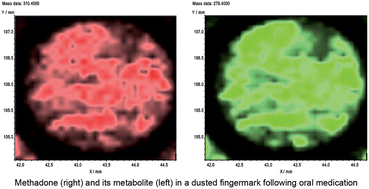Detection of drugs and their metabolites in dusted latent fingermarks by mass spectrometry†
Abstract
A hydrophobic

- This article is part of the themed collection: Materials for Detection
* Corresponding authors
a
ROAR Particles Ltd, Netpark Incubator, Sedgefield, County Durham, UK
E-mail:
fred.rowell@roarparticles.com
b School of Health, Natural and Social Sciences, University of Sunderland, Sunderland, UK
A hydrophobic

 Please wait while we load your content...
Something went wrong. Try again?
Please wait while we load your content...
Something went wrong. Try again?
F. Rowell, K. Hudson and J. Seviour, Analyst, 2009, 134, 701 DOI: 10.1039/B813957C
To request permission to reproduce material from this article, please go to the Copyright Clearance Center request page.
If you are an author contributing to an RSC publication, you do not need to request permission provided correct acknowledgement is given.
If you are the author of this article, you do not need to request permission to reproduce figures and diagrams provided correct acknowledgement is given. If you want to reproduce the whole article in a third-party publication (excluding your thesis/dissertation for which permission is not required) please go to the Copyright Clearance Center request page.
Read more about how to correctly acknowledge RSC content.
 Fetching data from CrossRef.
Fetching data from CrossRef.
This may take some time to load.
Loading related content
